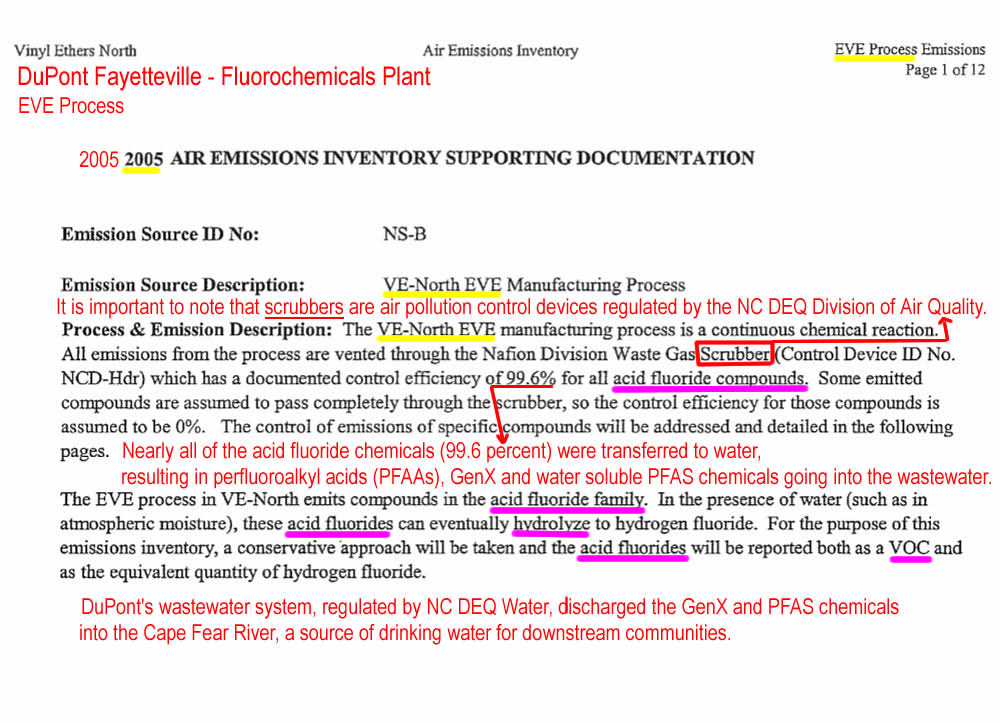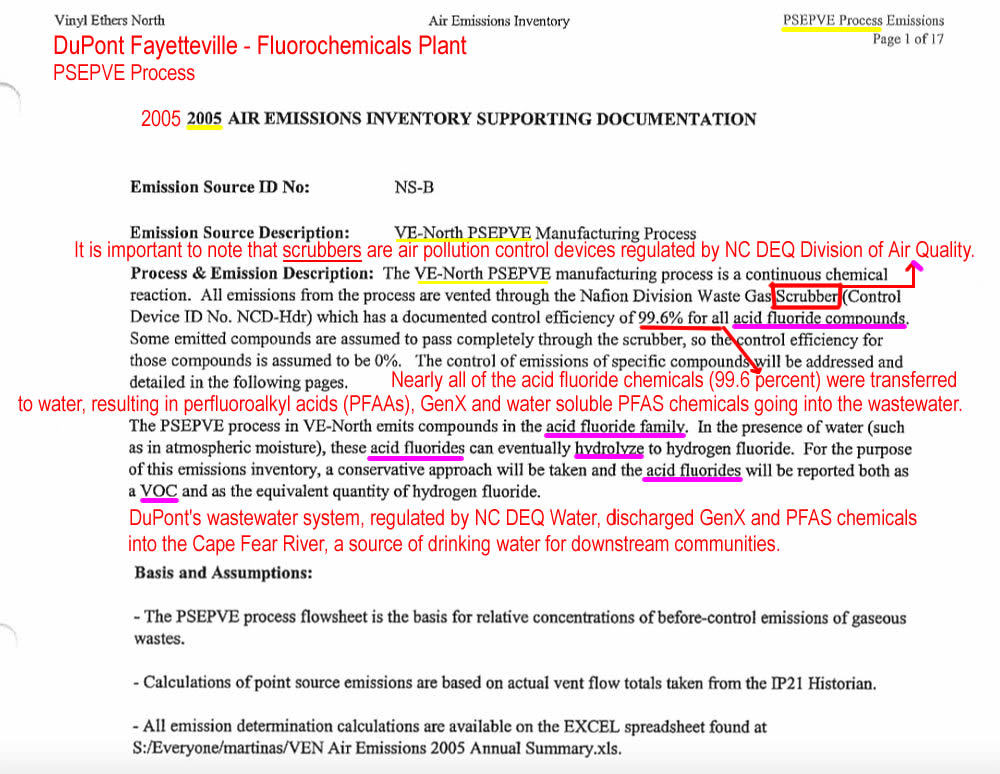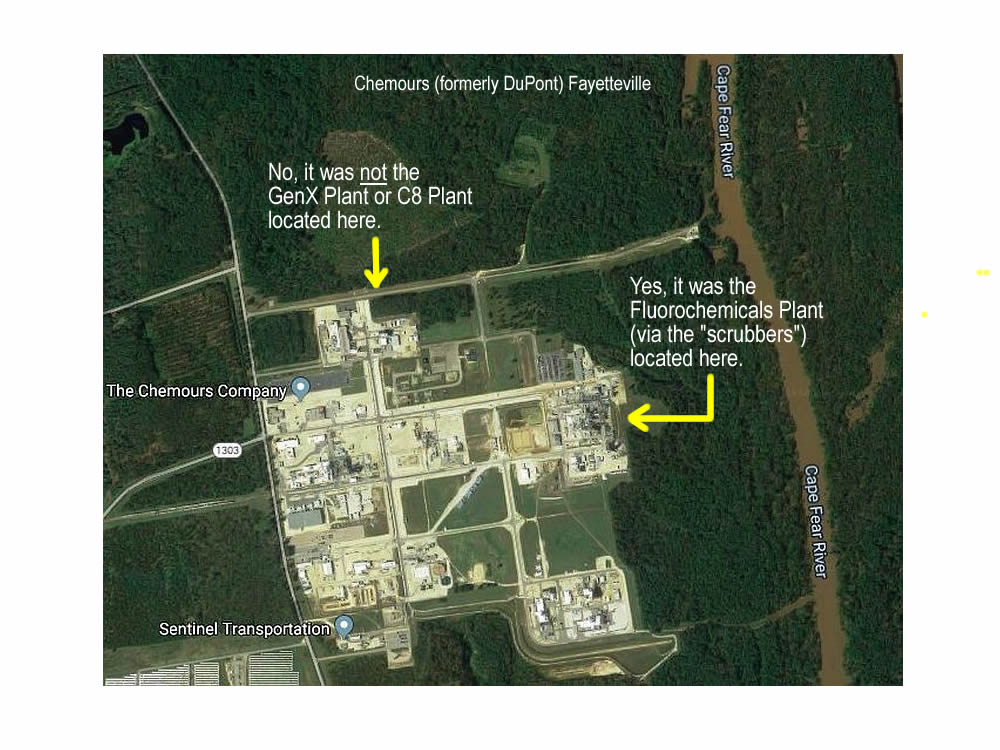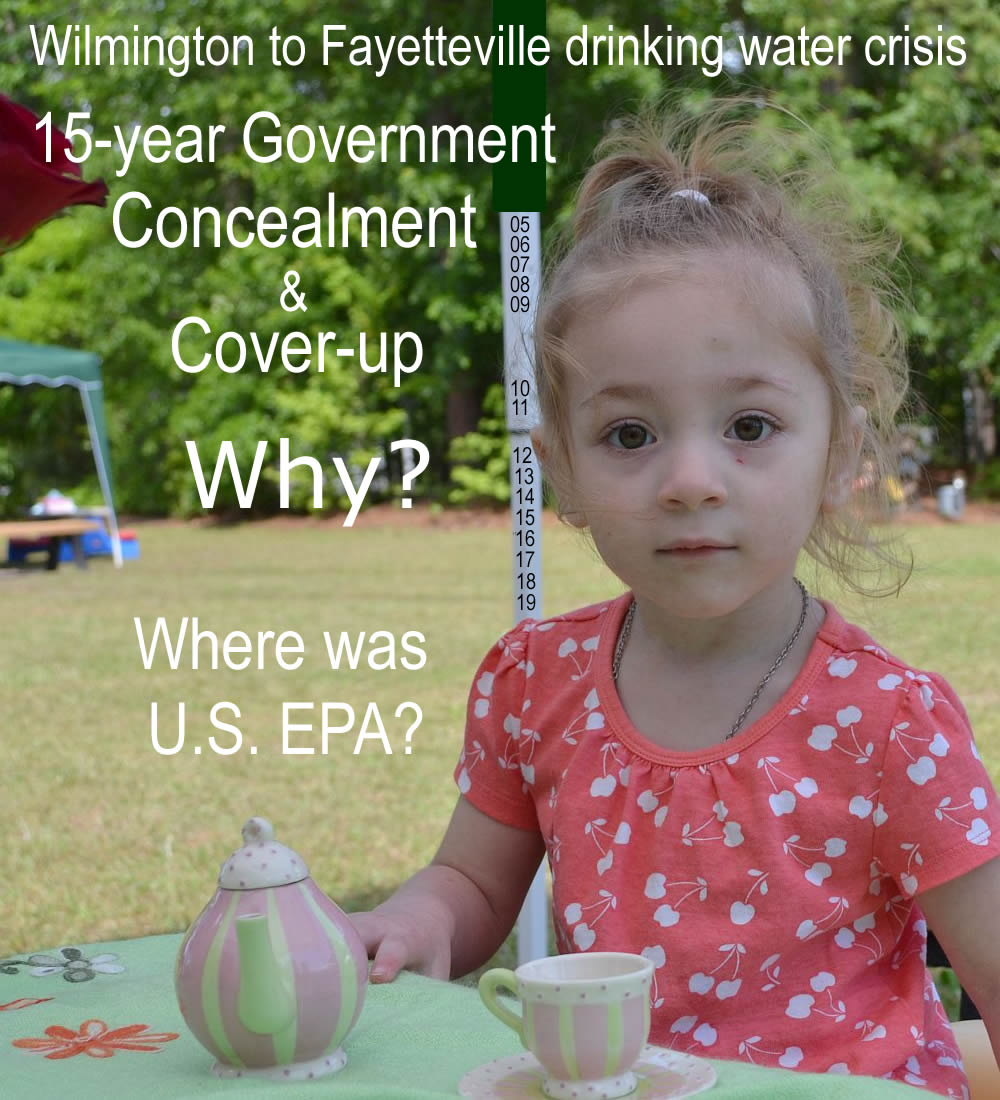

DuPont Fayetteville Works' 2006 annual report to government officials, showing their 2005 data, specified repeatedly that chemicals in the "acid fluoride family" were being transferred to water (via the scrubbers) at their Fluorochemicals Plant, resulting in PFAS pollutants (PFAAs, fluorocarbons, GenX and PFAS chemicals) in the wastewater discharged to the Cape Fear River. The Cape Fear River is a source of drinking water for Wilmington and many other downstream communities. DuPont's report was submitted to North Carolina government officials during the first half of 2005.
Several pages from DuPont's report have been highlighted below. They show acid fluoride chemicals transferred to the wastewater via DuPont's scrubbers, resulting in GenX and PFAS chemical pollutants being discharged from their Fluorochemicals Plant (Nafion Vinyl Ethers plant) near Fayetteville, NC. (Highlights and comments in color, shown below, made by T. McKinney on November 1, 2019.)
DuPont report submitted to government officials in 2006 (showing 2005 data): Part 1 (pdf); and Part 2 (pdf).







... Mr. Johnson indicated that they have detected perfluorooctanoic acid, also known as C8, in one of their groundwater monitoring wells. This is quite surprising since the APFO plant only began operation in December 2002...
...He indicated that it might have been formed from a chemical reaction associated with a process stream not involving the APFO process...
... The acid fluorides are highly soluble in water, not readily emitted to the air during the wastewater process, and readily converted to fluorcarbons. The fluorocarbons are persistent chemicals that are not degraded by the microorganisms and remain unchanged as they are discharged to the river...

